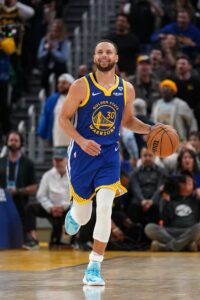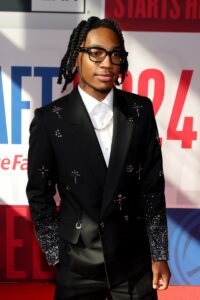Each summer when the NBA offseason arrives, a multitude of free agents sign new contracts and teams around the league consummate dozens of trades. On some occasions, these two forms of transactions are combined into something called a sign-and-trade deal.
What is a sign-and-trade?
Sign-and-trades occur when a team re-signs its own free agent, only to immediately send him to another team in exchange for players, draft picks, and/or cash. For the most part, they function like a normal NBA trade, except one of the pieces involved in the trade is a free agent who receives a new contract as part of the deal.
In order for a sign-and-trade deal to be completed, the following criteria must be met:
- A free agent must be signed-and-traded by the team with whom he finished the most recent season. For instance, the Cavaliers could sign-and-trade Isaac Okoro this offseason, but another team couldn’t sign Okoro and immediately move him. Cleveland also wouldn’t be permitted to sign-and-trade Raul Neto, even though the Cavs were his most recent team, because he finished the 2022/23 season with the club, rather than the ’23/24 season.
- If the free agent is restricted, he can’t be signed-and-traded after he signs an offer sheet with a rival team.
- A team acquiring a player via sign-and-trade cannot be over the first tax apron upon the conclusion of the deal and becomes hard-capped at the first apron for the rest of the league year.
- A free agent can’t be signed-and-traded once the regular season is underway.
- A free agent can’t be signed-and-traded using any exception that doesn’t allow for a three-year contract.
- A player receiving a designated veteran contract can’t be signed-and-traded.
Sign-and-trade contracts must cover either three or four seasons. However, only the first year of the deal needs to be fully guaranteed.
A sign-and-trade contract can be worth any amount up to the player’s maximum salary (with 5% annual raises) for a player who has full Bird rights. However, players with Non-Bird or Early Bird rights are subject to the restrictions of those exceptions.
For example, a player who only has Non-Bird rights and is signed-and-traded would be limited to a first-year salary worth up to 120% of his previous salary, 120% of his minimum salary, or the amount of his qualifying offer (if the player is a restricted free agent)
If a sign-and-trade contract includes a signing bonus, either team can agree to pay it, though if the signing team pays it, it counts toward that club’s limit for cash included in trades for that league year, so that’s uncommon. If a trade bonus is included, it would kick in upon any subsequent trade rather than as part of the sign-and-trade transaction itself.
The benefits and challenges of the sign-and-trade
Prior to the NBA’s 2011 Collective Bargaining Agreement, a free agent could receive a five-year contract via sign-and-trade, but that’s no longer the case — the contract restrictions for players acquired via sign-and-trade are the same as those that apply to a player signing outright with a new team via cap room (four years and 5% raises).
The goal of that change was to encourage top free agents to remain with their own clubs in order to maximize their earnings, rather than allowing them to sign similarly lucrative long-term contracts while changing teams.
In more recent CBAs, including the 2023 agreement, a specific set of circumstances is often required for teams and players to be incentivized to participate in sign-and-trades. If a player wants to change teams, it often makes more sense for him to sign with the new team outright, rather than making that club give up assets to complete the acquisition. Even the player’s old team may prefer to simply let the free agent walk and claim the resulting cap space, rather than taking back unwanted assets in a sign-and-trade.
There are other potential roadblocks complicating sign-and-trade deals as well. A signed-and-traded player’s salary may be viewed differently for salary-matching purposes than it would be in a standard trade, which can compromise a team’s ability to meet those salary-matching requirements. We outline those rules in our glossary entry on base year compensation.
However, if a potential suitor is operating over the cap and under the first apron, a sign-and-trade can make sense — especially if that club wants to sign the player for more than the mid-level amount, or if the club can offer the free agent’s prior team something of value.
Sign-and-trades can also come in handy when a team needs to aggregate one more contract in a trade for salary-matching purposes, or when a team that has already used its mid-level exception wants to add a second free agent in that mid-level range.
2024 sign-and-trades
 During the 2024 offseason, eight players have changed teams via sign-and-trade. Five of those players were what we’d call “traditional” sign-and-trade participants — DeMar DeRozan (Kings), Klay Thompson (Mavericks), Buddy Hield (Warriors), Kyle Anderson (Warriors), and Kris Dunn (Clippers) were each acquired by teams who didn’t otherwise have the ability to offer the salaries those players received via sign-and-trade.
During the 2024 offseason, eight players have changed teams via sign-and-trade. Five of those players were what we’d call “traditional” sign-and-trade participants — DeMar DeRozan (Kings), Klay Thompson (Mavericks), Buddy Hield (Warriors), Kyle Anderson (Warriors), and Kris Dunn (Clippers) were each acquired by teams who didn’t otherwise have the ability to offer the salaries those players received via sign-and-trade.
DeRozan’s and Thompson’s deals exceeded the mid-level exception and were completed by teams without cap room available; Hield, Anderson, and Dunn all got contracts in the mid-level range from clubs who had already used their MLE on another player.
A sixth player, Jonas Valanciunas, could’ve been signed using the Wizards‘ mid-level exception, but the Pelicans agreed to sign-and-trade him to Washington because it was a win-win for the two teams — New Orleans received a heavily protected second-round pick and a trade exception in the deal, while the Wizards absorbed Valanciunas using a trade exception and preserved their full MLE. They used a portion of that mid-level to sign Saddiq Bey, while the remainder could prove useful later in 2024/25.
The final two sign-and-trade contract recipients of the 2024 offseason, Shake Milton and Cody Zeller, were used as salary-matching pieces in the Mikal Bridges and Dejounte Murray trades, respectively.
Because Milton and Zeller were essentially salary filler in those deals and the Nets and Hawks weren’t specifically targeting them, both players received salaries just large enough to meet the matching rules and received only one guaranteed season on their new three-year contracts.
The second apron tweak
While it has become relatively common knowledge among NBA fans that teams above the first tax apron can’t acquire a player via sign-and-trade, a new wrinkle was introduced in the 2023 CBA affecting teams above the second tax apron.
A team that sends out a player via sign-and-trade cannot take back salary – either simultaneously or non-simultaneously – in exchange for that outgoing player if that team is operating above the second tax apron. A team that takes back salary for a signed-and-traded player becomes hard-capped at the second apron for the rest of the season.
For example, when the Timberwolves – who are operating above the second apron in 2024/25 – signed-and-traded Anderson to Golden State, they were prohibited from taking back any salary using Anderson’s outgoing salary for matching purposes. Although the Wolves technically created a trade exception worth approximately $8.8MM (Anderson’s new salary) in that deal with the Warriors, they’ll be ineligible to use that exception as long as their team salary remains above the second apron.
Note: This is a Hoops Rumors Glossary entry. Our glossary posts will explain specific rules relating to trades, free agency, or other aspects of the NBA’s Collective Bargaining Agreement. Larry Coon’s Salary Cap FAQ was used in the creation of this post.
Earlier versions of this post were published in 2013, 2019, and 2020.

 Ryan’s non-guaranteed minimum-salary contract includes
Ryan’s non-guaranteed minimum-salary contract includes  During the 2024 offseason, eight players have changed teams via sign-and-trade. Five of those players were what we’d call “traditional” sign-and-trade participants —
During the 2024 offseason, eight players have changed teams via sign-and-trade. Five of those players were what we’d call “traditional” sign-and-trade participants —  The Raptors are one of the other teams with a new longest-tenured player this season after parting ways with
The Raptors are one of the other teams with a new longest-tenured player this season after parting ways with  Acquired the draft rights to
Acquired the draft rights to  Dillingham and Shannon won’t provide the sort of veteran savvy that Morris and McLaughlin brought to the table and may not be ready to play regular roles right away, but their youth, athleticism, and scoring ability will give the Wolves some real upside off the bench going forward.
Dillingham and Shannon won’t provide the sort of veteran savvy that Morris and McLaughlin brought to the table and may not be ready to play regular roles right away, but their youth, athleticism, and scoring ability will give the Wolves some real upside off the bench going forward.